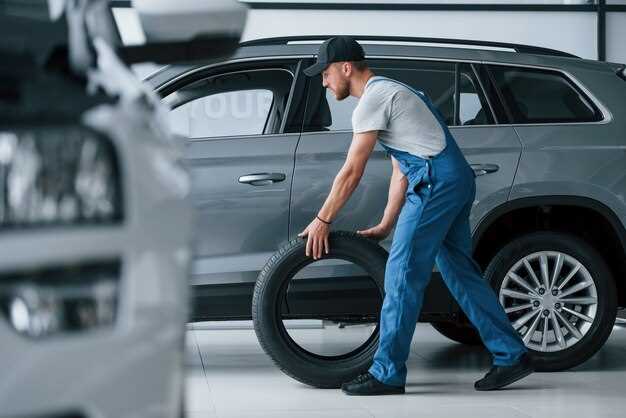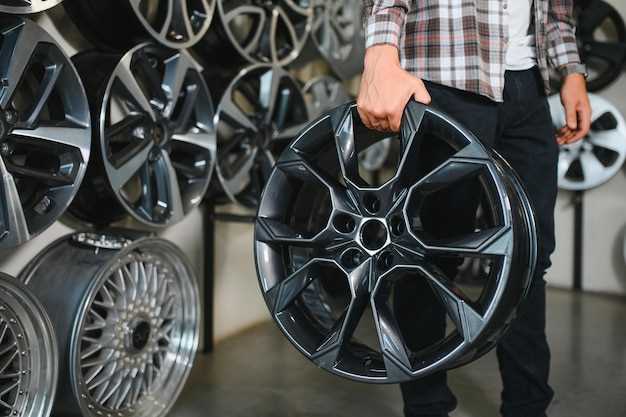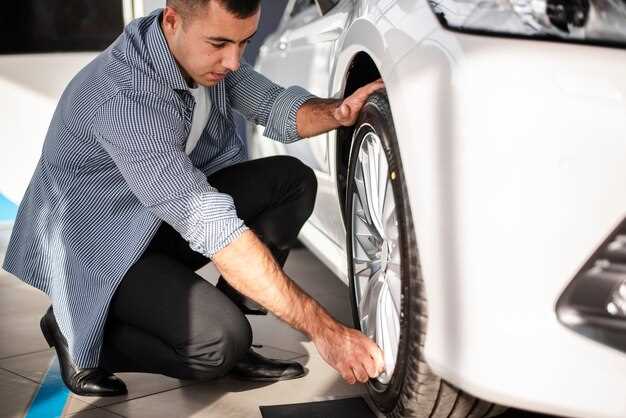
When it comes to enhancing the performance and aesthetic appeal of your vehicle, choosing the right wheels is crucial. The right wheels not only improve the overall look of your vehicle but also play a significant role in its handling, ride quality, and safety. With countless options available on the market, it’s essential to consider various factors to ensure that you make the best choice for your needs.
One of the key elements in selecting the perfect wheels is understanding the concept of fitment. Proper fitment involves choosing wheels that are compatible with your vehicle’s specifications, including bolt pattern, offset, and diameter. This ensures that the wheels not only fit properly but also perform at their best. Custom fitment options can provide unique solutions for those looking to enhance the individuality of their vehicle while maintaining performance.
Furthermore, the choice of materials and design can significantly affect the weight and strength of the wheels. Lighter wheels often improve acceleration and fuel efficiency, while sturdier options can enhance durability, especially for off-road enthusiasts. By taking the time to research and understand these factors, you can confidently select wheels that will elevate both the performance and appearance of your vehicle.
Understanding Wheel Fitment for Your Specific Vehicle Model
Proper wheel fitment is crucial for the safety and performance of your vehicle. Inappropriate wheels can lead to handling issues, increased wear on components, and even compromise safety. Here’s a guide to help you understand wheel fitment for your specific vehicle model.
To ensure the right fitment, consider the following factors:
- Bolt Pattern: This is the arrangement of the wheel bolts which secures the wheel to the hub. Each vehicle model has a specific bolt pattern, usually expressed in a format like 5×114.3 or 4×100.
- Offset: Offset refers to the distance between the wheel’s centerline and the mounting surface. Proper offset affects stance, handling, and brake clearance. Understanding if you need a positive, negative, or zero offset is essential.
- Diameter and Width: The size of the wheel (both diameter and width) should be compatible with your vehicle’s specifications. It’s important to stick to the recommended dimensions, as deviations can affect tire selection and overall performance.
- Center Bore: This is the hole in the center of the wheel that fits over the vehicle’s hub. Properly matching the center bore is crucial to avoid vibrations and ensure safety.
Each vehicle may have specific requirements or recommendations from manufacturers regarding wheel fitment. To find the correct fitment for your model:
- Check your vehicle owner’s manual for specifications regarding wheel sizes and fitment.
- Consult with tire and wheel specialists who can provide insights based on your vehicle’s make and model.
- Use online fitment calculators that allow you to input your vehicle details to find compatible wheels.
- Consider the aspect of tire clearance within the wheel well. Make sure new wheels won’t interfere with suspension components or brake systems.
By paying close attention to these factors and verifying fitment details, you can select wheels that enhance both the aesthetics and performance of your vehicle while maintaining safety and functionality.
Evaluating Material Options: Aluminum vs. Steel Wheels
When it comes to selecting custom wheels for your vehicle, one of the most critical decisions involves choosing the right material. The two most common options are aluminum and steel, each with its own set of advantages and disadvantages.
Aluminum wheels are known for their lightweight nature, which can enhance performance by improving acceleration and handling. Their reduced weight also contributes to better fuel efficiency. Moreover, aluminum wheels often come in a range of stylish designs and finishes, making them a popular choice for those looking to customize their vehicles. However, they are generally more expensive than steel wheels and can be more prone to damage from curbs or potholes.
On the other hand, steel wheels are typically more durable and resistant to damage. They can withstand rough conditions, making them ideal for off-road driving or areas with poor road quality. Steel wheels are also more affordable, which makes them a practical choice for budget-conscious drivers. One downside is that steel wheels tend to be heavier, which can negatively impact vehicle performance and fuel consumption. Additionally, they have fewer design options and are more susceptible to rust if not properly coated.
Ultimately, the choice between aluminum and steel wheels will depend on your specific driving needs, budget, and desired aesthetic appeal. Assessing the trade-offs between performance, durability, and cost will guide you in making an informed decision for your vehicle’s custom wheels.
Assessing Wheel Size and its Impact on Performance
Choosing the right wheel size for your vehicle is crucial for optimizing its performance, handling, and overall driving experience. The size of the wheels can significantly affect various aspects of vehicle dynamics, including acceleration, braking, and ride comfort.
Here are key factors to consider when assessing wheel size:
- Ride Quality: Larger wheels typically reduce sidewall height of tires, which can lead to a stiffer ride. This may enhance handling but can compromise comfort on rough roads.
- Handling: Wider wheels offer better grip and cornering capabilities. Custom wheels can help improve stability but may alter the vehicle’s natural handling characteristics.
- Acceleration: Heavier wheels can negatively impact acceleration due to increased rolling resistance. Lightweight custom wheels can enhance performance by reducing overall weight.
- Braking Performance: Larger wheels may accommodate bigger brake components, improving stopping power. However, this can also cause a trade-off with weight distribution.
- Aesthetics: The visual appeal of custom wheels is undeniable. They can enhance the overall appearance of your vehicle while providing benefits, such as improved airflow to brakes.
It is essential to strike a balance between aesthetics and performance. When selecting wheel size, consider the following recommendations:
- Consult your vehicle’s manufacturer guidelines to ensure compatibility with the suspension and brakes.
- Determine the type of driving you engage in most often–daily commuting, off-road, or performance racing–and choose accordingly.
- Explore aftermarket options, as custom wheels can provide additional benefits tailored to your specific needs.
- Test different sizes through vehicle tuning services, if available, to find the best fit for your driving style.
In conclusion, the size of the wheels can greatly influence various performance metrics of your vehicle. By carefully evaluating how wheel size affects ride quality, handling, and aesthetic appeal, you can make a more informed decision that aligns with your driving preferences.
Choosing the Right Offset and Backspacing for Optimal Handling
When selecting wheels for your vehicle, understanding offset and backspacing is crucial for achieving optimal handling. Offset refers to the distance between the wheel’s mounting surface and its centerline. It impacts the wheel’s position in relation to the vehicle’s suspension, steering, and body. Properly chosen offset ensures that your wheels fit well within the wheel wells, maintaining clearance from suspension components and fenders.
There are three types of offset: positive, negative, and zero. Positive offset means the mounting surface is positioned toward the front of the wheel, which pushes the wheel inward. Negative offset has the mounting surface pushed toward the back, resulting in a wheel that extends outward from the vehicle. Zero offset places the mounting surface at the wheel’s centerline. Depending on your vehicle’s design, choosing the right offset will enhance both fitment and handling characteristics.
Backspacing is closely related to offset, defined as the distance from the back edge of the wheel to the mounting surface. It is essential for determining how far the wheel sits from the suspension and other components. Adjusting backspacing can help achieve the desired flush look while maintaining performance. If backspacing is too shallow, the wheels can rub against suspension parts, leading to reduced performance and handling issues.
When modifying your vehicle, consider how changes to offset and backspacing affect the overall handling dynamics. A change in offset can alter the wheel’s center of gravity, impacting cornering stability. Ideally, changes should be paired with appropriate suspension adjustments to preserve handling balance, especially in performance applications.
In summary, selecting the right offset and backspacing is essential for ensuring your wheels fit properly while optimizing handling. Careful consideration of these factors will not only enhance the visual appeal of your vehicle but also contribute to better overall performance on the road or track.
Custom Wheels vs. Stock: Pros and Cons for Your Needs

When it comes to selecting wheels for your vehicle, the choice between custom wheels and stock wheels can significantly impact both performance and aesthetics. Here’s a breakdown of the pros and cons of each option to help you make an informed decision.
| Aspect | Custom Wheels | Stock Wheels |
|---|---|---|
| Fitment | Custom wheels can be tailored to perfect fit your vehicle’s specifications, improving handling and performance. | Stock wheels are designed to meet the vehicle’s original specifications, ensuring compatibility but limiting customization options. |
| Aesthetics | Available in a wide variety of designs, finishes, and sizes, custom wheels allow for personal expression. | Stock wheels often have a generic design and may not provide the unique look many drivers desire. |
| Performance | Custom wheels can enhance performance through reduced weight and improved materials, but may require careful selection. | Stock wheels are generally optimized for safety and reliability, though performance upgrades may be limited. |
| Price | Custom wheels can be significantly more expensive due to unique designs and materials. | Stock wheels are typically more budget-friendly and readily available through dealerships and auto parts stores. |
| Availability | Custom wheels may have longer lead times and require ordering from specialty suppliers. | Stock wheels are usually available immediately and can be sourced easily. |
| Resale Value | Custom wheels may not always add to resale value, depending on buyer preferences. | Stock wheels usually appeal to a wider market, making vehicles easier to sell. |
Ultimately, the choice between custom and stock wheels hinges on your specific needs and preferences regarding fitment, performance, and style. Consider how much you prioritize individuality versus practicality in your wheel selection.
Maintenance Tips to Extend the Life of Your Custom Wheels

Custom wheels not only enhance the aesthetic appeal of your vehicle but also play a crucial role in performance. Proper maintenance is essential to extend their lifespan and ensure optimal fitment. Here are some key tips to consider.
Regular Cleaning: One of the most important aspects of wheel maintenance is keeping them clean. Use a gentle wheel cleaner specifically designed for your wheel material, whether it’s aluminum, chrome, or alloy. Avoid harsh chemicals that can damage the finish. Regular cleaning prevents the buildup of brake dust, grime, and road salt, which can lead to corrosion.
Inspect for Damage: Regularly inspect your wheels for any signs of damage or wear. Look for scratches, dents, or bent rims. Addressing these issues early can prevent further damage and maintain proper fitment. If you notice any cracks or severe damage, consider consulting a professional for repair or replacement.
Tire Rotation: Regularly rotating your tires can help distribute wear evenly across your wheels. This practice not only improves the longevity of your tires but also helps maintain even pressure on the wheels, contributing to consistent fitment and performance.
Proper Storage: If you need to store your wheels, ensure they are cleaned and dry before placing them in a cool, dry area. Use wheel covers to protect them from dust and sunlight, which can degrade the finish over time. Proper storage prevents unnecessary wear when the wheels are not in use.
Check Wheel Hardware: Periodically check the lug nuts and bolts for tightness. Loose hardware can lead to a dangerous situation on the road and may affect the fitment of your wheels. Ensure they are torqued to the manufacturer’s specifications.
Monitor Tire Pressure: Maintaining the correct tire pressure is vital for wheel health. Under-inflated tires can lead to increased stress on the wheels, while over-inflation can cause tire blowouts. Regularly check and adjust tire pressure according to your vehicle’s guidelines.
Professional Inspections: Consider scheduling routine inspections with a professional mechanic. This can help identify underlying issues that may not be visible during casual checks. A professional can also ensure that your wheel fitment remains optimal.
By following these maintenance tips, you can significantly extend the life of your custom wheels, ensuring they continue to enhance both the appearance and performance of your vehicle.
